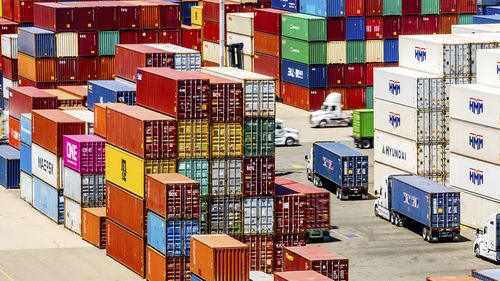While Australian exports to the US have avoided any tariff rises in the latest round of Donald Trump’s “reciprocal” trade taxes, many other countries have not escaped them.
The White House today issued a list setting the rates for 68 nations and the 27-member European Union.
Australia is unaffected by today’s change and, along with other countries not on the list, will keep a 10 per cent baseline tariff on US exports.

A senior Trump administration official who spoke to reporters on the condition of anonymity said the rates were based on trade imbalance with the US and regional economic profiles.
But whatever the method behind them, the tariffs left plenty of winners and losers.
Despite being a favourite target for Trump’s ire, Mexico has not been subjected to any new tariffs.
Instead, the president announced a new 90-day delay for tariffs on Mexico, with the current 25 per cent rate remaining.
Japan’s tariff has dropped substantially from 24 per cent to 15 per cent.
Indonesia’s tariffs fell from 32 to 19 per cent, and Thailand’s dropped from 36 to 19 per cent.
India has dropped from 26 to 25 per cent.
But one of Australia’s closest neighbours fared worse. New Zealand has been handed a substantial rise in tariffs, jumping from the baseline 10 per cent to 15 per cent.
After initially threatening the African nation of Lesotho with a 50 per cent tariff, the country’s goods will now be taxed at 15 per cent.
Taiwan will have tariffs set at 20 per cent, Pakistan at 19 per cent and Israel, Iceland, Norway, Fiji, Ghana, Guyana and Ecuador among the countries with imported goods taxed at 15 per cent.
Wealthy Switzerland would be tariffed at 39 per cent.
Many developing countries faced the harshest treatment. Syria was thumped with a 41 per cent rate, while Myanmar and Laos were each whacked with a 40 per cent tariff.
Trump had announced a 50 per cent tariff on goods from Brazil, but the order was only 10 per cent as the other 40 per cent were part of a separate measure approved by Trump on Wednesday.





